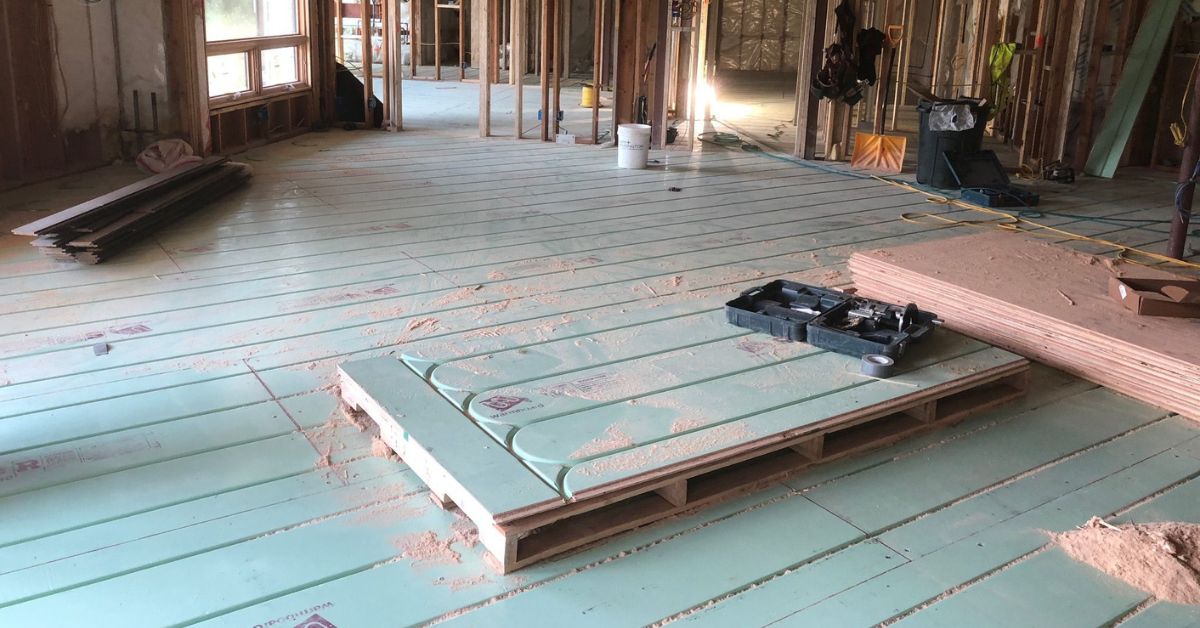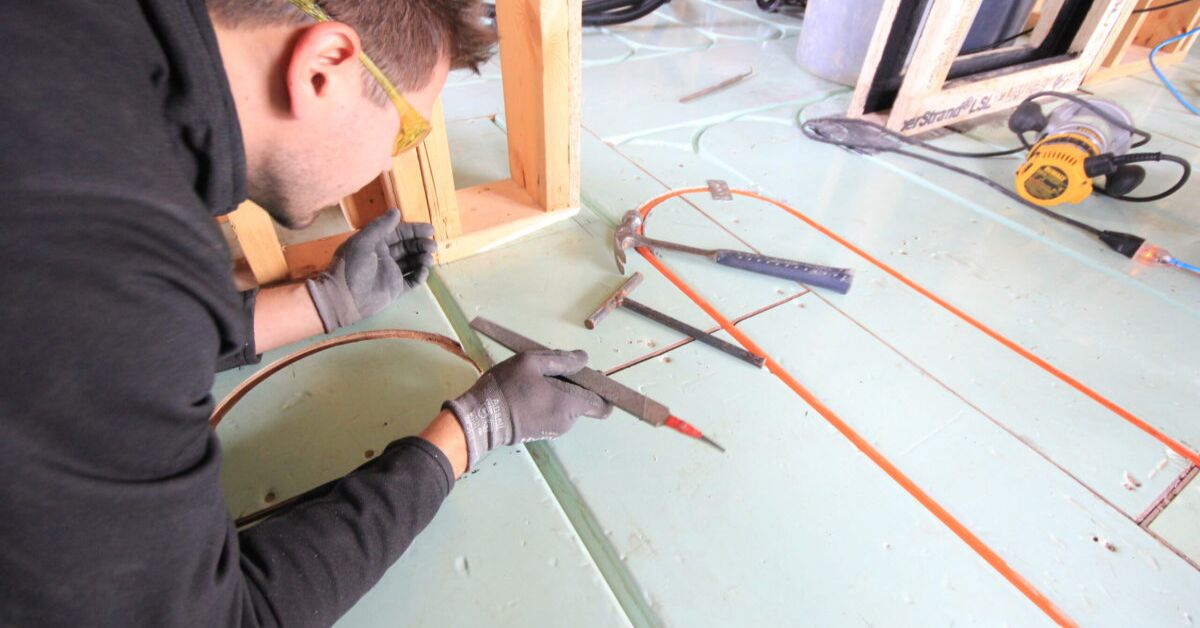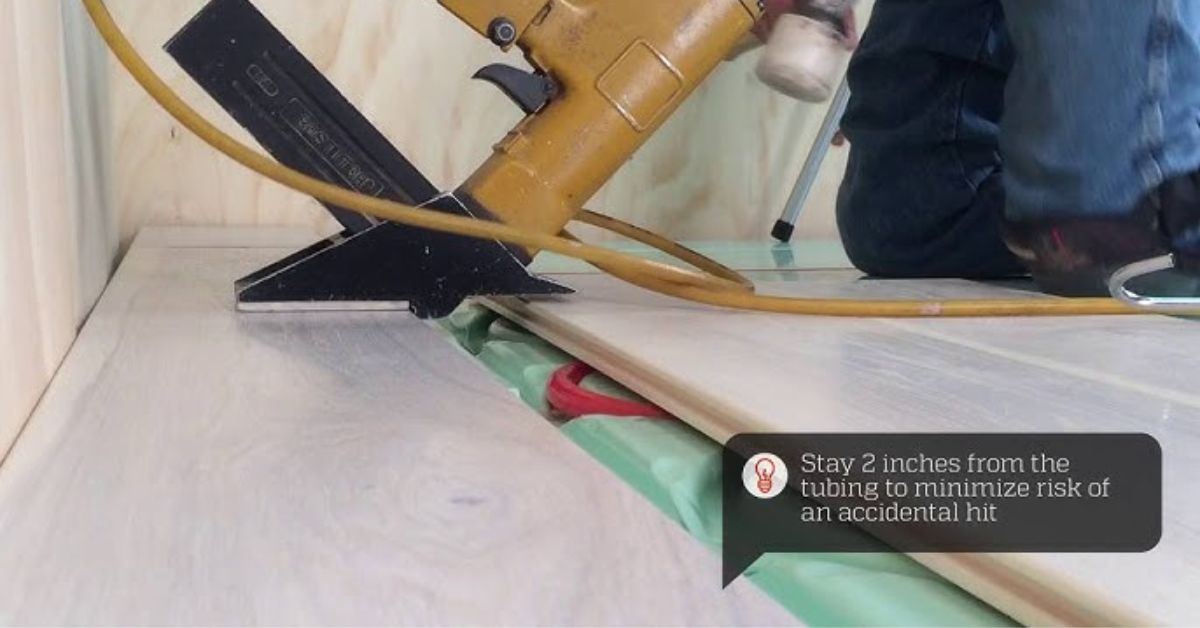Winter is fast approaching and you may find yourself considering alternative forms of heat. While conventional forced air heating can get the job done, it leaves much to be desired, especially when it comes to comfort, efficiency, and sustainability. But have you considered an in-floor heating system? You may be surprised to find that they can actually replace conventional heating methods. If you’re just starting your research, we recommend checking out our 2023 floor heating guide.
The sum of what you should know about in-floor radiant heat is the major benefits provided by heated flooring systems. Hydronic radiant floor heating systems can supply even heat throughout your home. They do this by circulating hot water through tubing beneath your regular flooring. This approach is very quiet compared with traditional heating systems. Although they may be slower to heat up, they offer energy efficient methods of creating comfortable heat through every inch of your home.
Let’s explore more about the pros (and some cons) of in-floor heating.

What Are Heated Floors?
Hydronic radiant heat systems can provide a full service of heat without the need of an additional heating source, like a furnace or wall radiator. Hot water pipes are installed underneath the flooring create warmth throughout the home. There are no bulky radiators to consider or vents that blast hot air that quickly dissipates.
Cons of Conventional Heating Systems
One major blow back of conventional heat systems is the inefficiency. Traditional heat seeks to warm the air directly. As we know, hot air rises while cold air sinks, resulting in an uneven distribution of heat. And air is difficult to control, often making one side of your house colder than the other. Radiant heat overcomes these faults by directly warming objects and people. Learn more about solving issues for uneven home heating.
Through the operation of radiant heating, warm water circulates through pipes which passes through to the floor and into the house and other household objects. It also warms on contact through your feet and body.
What Are The Major Benefits of Hydronic Radiant Heat?
Radiant heat systems offer huge benefits that may entice homeowners to consider its worthwhile investment. In the long-run, it can save thousands of dollars in energy costs. With radiant heat systems, you can control the temperature in each room, and make the temperature ideal for every occupant.
The feeling of radiant heat is similar to what you would feel outside on a sunny day. Some of the major “pros” of radiant heat include:

Controlled Heating
As mentioned above, radiant floor heating systems are controlled room-by-room. Keep your living room warmer during the day and cooler at night. Keep your bathrooms a little bit warmer than the rest of the house, or turn down certain rooms when they are not in use. You can even turn rooms off for extended periods of time to continue to save energy. Selective preferences for your homes’ comfort makes floor heating an ideal option.
Cleaner Air
Since hot air isn’t blowing through the home, you don’t have to worry as much about air quality control. You can say bye to the circulation of dust, germs, and other allergens. For this reason, radiant heat systems are often a better option for individuals who suffer from allergies or respiratory conditions.
Reduced Noise
Traditional heating systems are noisy and downright distracting. If you want to enjoy the superior comfort of your surroundings, silent heat systems are the way to go. Hydronic radiant is quiet and eliminates the headache of listening to the furnace turn on and off throughout the day and night. And you can enjoy a better night’s sleep too.
Easy to Install
Despite what you may have hard, the installation process for in floor heating can be relatively painless. And with Warmboard, it’s particularly easy. We can design the entire system for you, and we work with experienced architects, contractors and other professionals to help ensure installation goes quickly and easily, especially compared to some other radiant flooring options out there.
Downside to In Floor Heating
There’s some “cons” to in-floor heating that you may also consider. The drawbacks are easy to overlook considering the perks and benefits that come with a full hydronic heat system. Here are some things to be aware of:
Flooring Replacement
Hydronic radiant heating is most applicable when building a new home or doing a major remodel. In order to install radiant heat, if there’s existing flooring, it will need to be removed, as the tubing and panels, obviously, install beneath the flooring. Once completed, virtually any type of flooring can be installed over it. If you’re installing with a new-build home, it’s simple to get in floor heating installed without a headache.
Elevated Floor Heights
If remodeling your home with hydronic radiant floors, accommodating for flooring heights is something you will want to consider. Once the Warmboard panels are installed, and the new flooring is installed on top, flooring height may have increased anywhere from 1-2 inches. This can cause some issues with stairs and door heights, but is usually easy to address during the construction process.

Initial Cost
In floor heating is not inexpensive. In fact, it’s definitely an upfront investment and can be much higher than traditional methods of heating. However, keep in mind that radiant heated floors may cost more upfront but ultimately save on the backend. You can expect to be exquisitely comfortable in every room, while saving hundreds, if not thousands of dollars a year on your energy bills.
How to Get Started
To find out how much in floor heating costs, check out Warmboard’s systems and inquire how you can work with us. Warmboard offers solutions whether you are building a custom home or remodeling an existing one. We’ll work with you to recommend the best options for your radiant floor home heating project, and you can rest assured that all our products are easy to install.